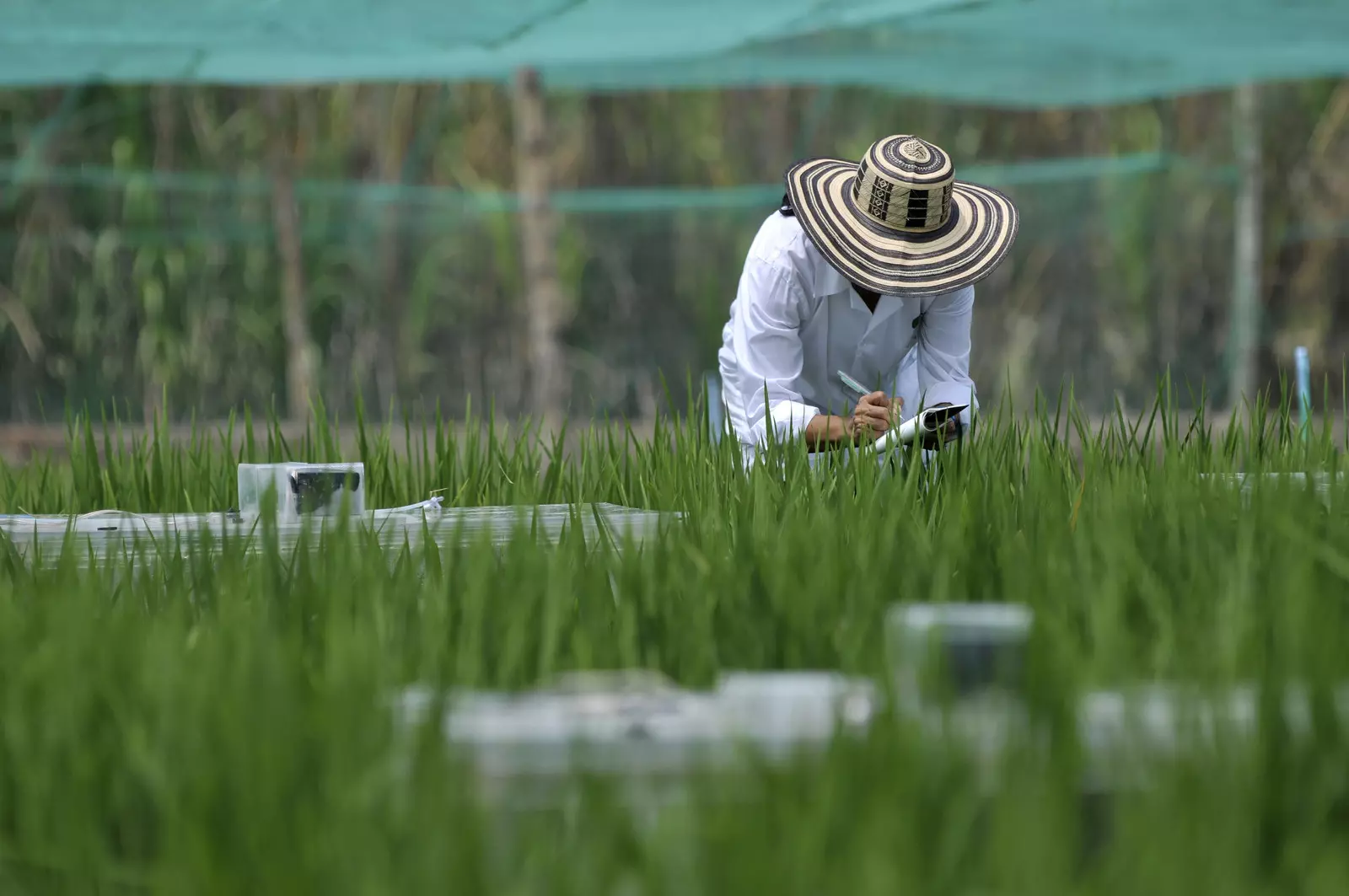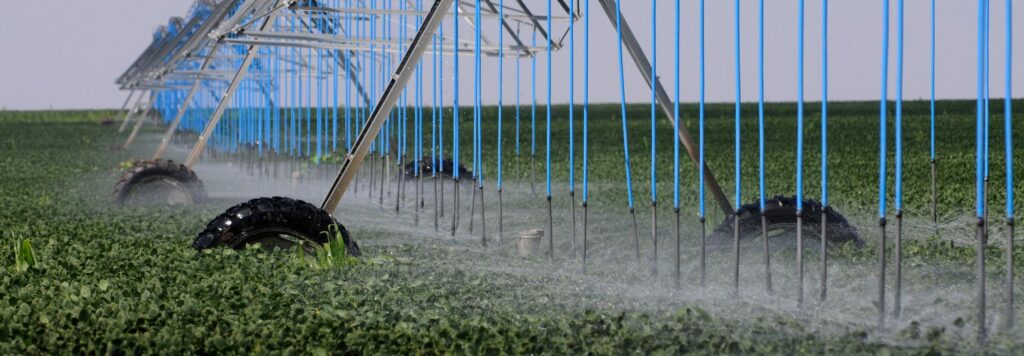American agriculture is among the most productive in the world. It employs 2.6 million people in growing food and other products worth nearly $400 billion annually. Over 20% of that output is shipped abroad, making the United States the largest exporter of agricultural products globally. U.S. agriculture has also grown more efficient in recent years, increasing crop and livestock production by about 30% from 1997 to 2017 while increasing its greenhouse gas (GHG) emissions by only 7%.
But even considering this progress, the U.S. agricultural sector will need to do much more to address the global challenges of rising food demand and climate change. Global food demand is projected to grow by 56% between 2010 and 2050 due to population growth and rising incomes. At the same time, agriculture and related land-use change generate roughly one-quarter of global GHG emissions, and agricultural production accounts for about 10% of U.S. emissions.
Holding global temperature rise below 2 degrees C (3.6 degrees F) — the level scientists agree is necessary to limit the worst effects of climate change — will require the global agriculture and land-use sector to reduce emissions by two-thirds between 2010 and 2050, including halting agriculture-driven deforestation. To stay below 1.5 degrees C (2.7 degrees F), large areas of land would need to be reforested around the world. Therefore, the world will need to accelerate gains in agricultural productivity and change consumption patterns to feed a growing population while achieving climate goals.
Fortunately, addressing these food security and climate challenges would also bring other important benefits for farmers and ranchers, such as improving resilience to extreme weather events, reducing water stress, improving water quality, and sustaining long-term productivity and profitability.
Note: The U.S. figure is based on emissions analyses done by the U.S. EPA and not the GlobAgri-WRR model. There are a number of differences in how the global and U.S. estimates were derived. High nitrous oxide emissions from soil fertilization reported by the U.S. EPA were estimated using the Daycent model and are substantially higher than those estimated using IPCC Tier 1 emission factors.
How U.S. Agriculture Can Reduce Emissions While Increasing Food Production
Policymakers in the United States are increasingly aware of the central role agriculture plays in confronting the food and climate challenges. Earlier this year, Secretary of Agriculture Sonny Perdue called for innovation in reducing agricultural GHG emissions while increasing production. Several bills introduced in Congress, along with the majority staff report from the House Select Committee on the Climate Crisis, also proposed measures to reduce agricultural emissions.
WRI research found a multi-pronged approach can simultaneously meet rising demand for food and reduce agriculture’s GHG footprint, while building resilience to extreme weather. A recurring theme in our research was the need to advance technological innovation.
Here are six important ways that U.S. agriculture can be a leader toward a sustainable food future:
1. Boost productivity.
U.S. farmers are increasingly producing more food per acre of land. From 1997-2017, wheat productivity (in bushels per acre) increased 23%, soybean productivity 28% and corn productivity 42%. Livestock productivity also greatly increased: From 1977-2007, improvements in efficiency led to a 33% reduction in land use, a 12% reduction in water use, and a 16% reduction in production emissions per pound of beef produced in the United States.
But in the decades ahead, the United States will need to accelerate progress on productivity without expanding the area of land required to grow food — whether here or abroad, where deforestation continues apace. Limiting the expansion of agricultural land area is important to protect U.S. forests, which removed more than 770 million tons of CO2 from the atmosphere in 2018 (offsetting 12% of national GHG emissions), and to free up additional land for reforestation to sequester even more carbon.
Policy solutions to boosting crop and livestock productivity should therefore follow a “produce and protect” framework. One critical need on the “produce” side of the equation is federal funding for research and development on productivity through the Agricultural Research Service, which has stagnated in real terms for decades. More productive crops can translate into higher revenues on each acre of farmland, boosting bottom lines for U.S. farmers. American leadership in agricultural productivity research also would allow U.S. agencies and companies to export new technologies overseas, helping farmers in developing countries raise their productivity as well without converting additional forest to agriculture.
On the “protect” side of the equation, the federal government could disincentivize the conversion of more land by making eligibility for crop insurance and other farm subsidies conditional on farmers not converting natural forest or grassland to cropland. This policy could build on the Sodsaver provision in the 2014 Farm Bill, which cut federal crop insurance subsidies for cropland established on sensitive lands in the Northern Great Plains. Additional funding for conservation easement programs could provide further incentives for keeping carbon-rich natural landscapes intact.
2. Reduce livestock emissions.
Livestock production accounts for more than 40% of U.S. agricultural GHG production emissions. These emissions stem from enteric fermentation (cow burps), manure management and wastes on pastures, and emissions associated with the production of corn, soy and other crops fed to animals. The productivity and efficiency gains mentioned above will reduce feed requirements, land use, and GHG emissions per pound of meat or gallon of milk.
Additional emissions reductions are possible through technological innovations like feed compounds that improve digestion in cattle — making them burp less methane — and improvements in manure management. Federal investments in research and development, as well as incentives for companies that develop innovative technologies, can help accelerate progress.
3. Reduce emissions from fertilizer use.
Roughly half of U.S. agricultural production emissions, and 20% globally, are related to use of synthetic fertilizers and manure. Most of these emissions are from nitrous oxide, a potent greenhouse gas.
A variety of promising techniques exist to reduce these emissions, with potential for further innovation to increase their effectiveness. These techniques include nitrification inhibitors, which can keep soil nitrogen in a form useable by crops for a longer period of time; microbes that allow crops to fix their own nitrogen, which can replace fertilizer application for some crops; processes to manufacture synthetic fertilizers from renewable energy sources; and more precise fertilizer management. Consistent use of cover crops — typically legumes or grains planted after the main crop is harvested — can also reduce emissions from fertilizer by adding nitrogen to the soil while preventing nutrient runoff into waterways and soil erosion.
Policies can accelerate research progress and uptake in this area. For instance, a fertilizer efficiency standard modeled on fuel economy standards could require companies to improve the nitrogen use efficiency of the fertilizers they produce over time. A low-carbon fertilizer program could likewise prompt manufacturers to shift toward nitrogen made from renewable energy. Incentives for natural solutions like cover crops have already proven successful at reducing nitrogen pollution at the state level, and offer cost savings for farmers.
4. Support on-farm renewable energy and energy efficiency.
Around 6% of agricultural production emissions in the United States come from on-farm fuel consumption, including farm equipment and other energy use. Improvements to equipment and greater energy efficiency in farm buildings can reduce fuel use and emissions while saving farmers money. USDA’s Rural Energy for America Program (REAP) offers grants and loan guarantees to help farmers access renewable energy systems and energy efficiency improvements, which can save them thousands of dollars in annual energy costs. Increased funding for the program could support farmers in this important transition.
5. Stabilize and sequester carbon in vegetation and soils.
While agriculture in the United States — as elsewhere — is a net source of GHG emissions, farms and pastures also store carbon in vegetation and soils. In addition to stabilizing the existing U.S. carbon sink by protecting forests and other natural landscapes, agricultural lands can sequester additional carbon in vegetation by integrating more trees through silvopasture and other agroforestry systems.
WRI called for the federal government to invest $4-4.5 billion per year to restore trees to the landscape through incentive payments or tax credits to landowners. That investment would help farmers and ranchers plant 15 billion new trees, which would sequester up to 136 million tons of CO2 per year while maintaining comparable farm yields and providing new sources of farm income from fruit, nuts or timber.
While many studies have found additional opportunities to sequester carbon in agricultural soils through practices like cover cropping, a recent WRI analysis and subsequent explainer piece found that the achievable scale of soil carbon sequestration is likely limited due to a number of scientific and practical uncertainties. These practices can, however, provide a range of other benefits, including reduced soil erosion, enhanced soil fertility and improved water retention. Additional research and innovation on improved soil management would be a “no-regrets” investment even if climate change mitigation benefits turn out to be small.
As a first step, Congress could create a farm innovation program that pairs financial and technical assistance for projects that pilot improved soil management practices with systematic data collection and research on soil carbon sequestration and farm yield impacts. WRI research found that robust implementation of such an innovation program across different geographies would require $500 million in annual federal funding, which could build on existing soil health pilot programs established by the 2018 Farm Bill.
6. Reduce food loss and waste.
Historically, most efforts focused on reducing food loss and waste in the United States have been at the consumer level, where high amounts of edible food are thrown away by households and restaurants. However, COVID-19 has led to significant on-farm losses due to decreased food service sector demand, farms’ inability to get food to redistribution centers, and reduction in labor availability due to health risks for farmworkers.
In response, the USDA put programs in place to buy some of the food that would have normally gone to restaurants and other food service outlets and distribute it to food banks. While this move is a good first step, other approaches can make the U.S. food system more resilient in the long-term, such as permanent programs that assist farmers in redistributing unsold food, technologies to better link farmers with other supply chain actors, and public support for farmworkers during periods of economic hardship.












